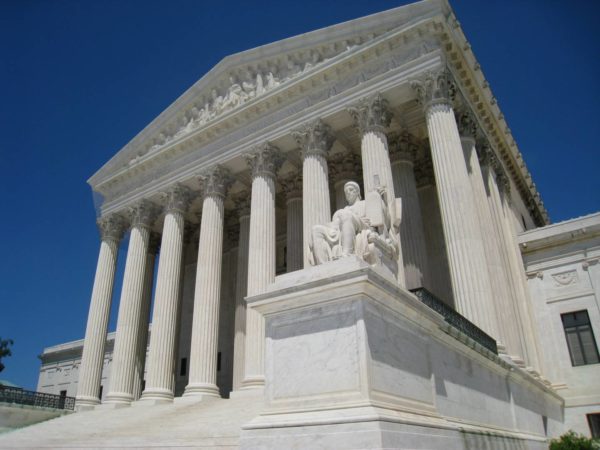On Monday, the United States Supreme Court will hear the most important case of the year for non-unionized workers

when it considers the National Labor Relations Board’s ban against employers using forced arbitration clauses to prevent employees from banding together to sue their employers in class and collective actions in court. (See my Sept. 18, 2017 column.) How can the NLRB lose this case, people have asked; doesn’t every American have a fundamental, almost sacred right to sue in court?
The answer is because the NLRB faces a tough adversary: the Supreme Court itself. The Court is not a litigant in the case, of course, but the three employers that are the NLRB’s opponents wouldn’t have a leg to stand on if the Court had not radically transformed arbitration law to favor employers in recent years. The NLRB has the difficult task of overcoming the Supreme Court’s own pro-employer precedent and convincing the Court to create an exception to that precedent.
The employers’ case rests on the Federal Arbitration Act (FAA), which Congress passed in 1925 – when Calvin Coolidge was President. The FAA that Congress actually wrote would win the day for the NLRB if it still existed. But the Supreme Court, under the guise of “interpreting” the FAA, has completely re-written the statute and turned it into a weapon for employers.
The FAA’s unambiguous “legislative history” shows that the 1925 Congress intended only to enforce arbitration agreements between large merchants, so that they could quickly resolve disputes over often-perishable goods before they rotted in warehouses or on the docks. At the urging of both union officials and the Secretary of Commerce, Congress deliberately excluded employment contracts from the FAA’s reach. That exclusion was supported even by the businesspeople who sponsored the bills that became the FAA.
The FAA as written applied only to arbitration contracts involving “interstate commerce,” which in 1925 meant that it did not cover any employment contracts other than those involving transportation workers who helped ship goods or people across state or national borders. And as to transportation workers, Congress expressly wrote into the FAA that “nothing contained herein shall apply” to them. To make the exemption for employees absolutely clear, the original statue stated in its margin that the FAA did not apply “to employment contracts” period.
But the Supreme Court has turned Congress’s statute on its head. It effectively re-wrote the FAA in a series of cases in which the Court wholly ignored Congress’s stated intent. First, the Court decreed that the FAA embodies a “strong national policy favoring arbitration” and that courts must enforce arbitration clauses “as written” – even if they appear in non-negotiable form agreements – unless the employees’ legal claims are based on federal laws that Congress has expressly specified cannot be arbitrated. Next the Court ruled that since the legal meaning of “interstate commerce” has changed since 1925 and now includes all employment contracts, the FAA applies to such contracts even if Congress intended the opposite result. Finally, the Court held that companies can include class and collective action waivers in arbitration clauses.
Thus, the Supreme Court has converted a Congressional statute that exempted employees from arbitration into one that permits employers to force employees to arbitrate unless the arbitration clause is expressly made unlawful by another federal statute. The great irony here is this radical re-write of Congress’s plain intent was done by the Court’s conservatives – mainly the late Justice Scalia, who frequently protested against such “judicial activism” and “legislating from the bench” (except, apparently, when doing so served his pro-business agenda).
Given the Supreme Court’s case law, the NLRB is limited to arguing that forced arbitration is unlawful under the National Labor Relations Act because it violates employees’ rights to engage in “concerted action” by filing class and collective lawsuits to protect their common interests. The employers argue that since the NLRA doesn’t expressly say that “arbitration of workers claims is unlawful,” the FAA’s strong “pro-arbitration policy” trumps the NLRA’s protection of concerted action insofar as it applies to lawsuits. They argue that if Congress wanted to permit employees to bring class and collective actions, the Supreme Court’s cases required Congress to amend the NLRA to expressly forbid forced individual arbitration, but it did not do so.
The NLRB counters that taking the employers’ arguments to their logical conclusion would allow employers to gut every worker protection because then any kind of otherwise illegal employment contract term would become legal so long as it is placed in an arbitration clause that must be enforced “as written.” That would absurdly enhance what Supreme Court Justice Elena Kagan once said, in a dissenting opinion, was companies’ ability to use the FAA as a “mechanism easily made to block the vindication of meritorious … claims and insulate wrongdoers from liability.”
Since Donald Trump was elected and put Justice Gorsuch on the Court, the NLRB’s odds here are not good. The fact that the AFL-CIO, eight other large unions, leading civil rights organizations and 17 state attorneys general support the NLRB may make no difference. Many Court-watchers believe the result will be yet another 5-4 ruling that elevates employers’ rights over workers’, this time effectively giving employers virtual carte blanche to violate labor, civil rights and workplace safety laws.
I will keep you posted.


